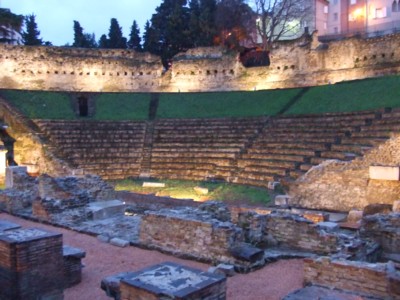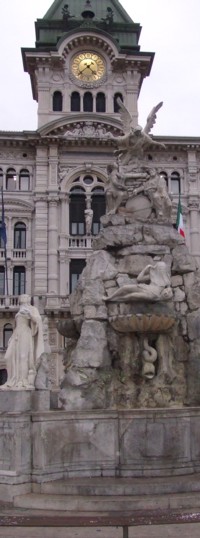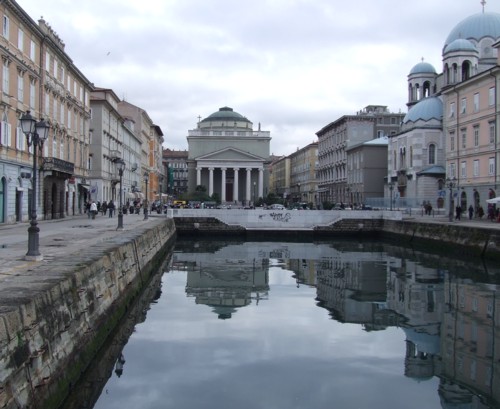About Trieste
Trieste is the capital of the far north-eastern region of Italy, Friuli-Venezia Giulia. For a long time this major port was part of the Austro-Hungarian Empire, and although the town is now part of Italy, it retains a not-quite-Italian feel. The Slovenian border is only a few miles away, curving round to the north and east. Coach services run from the centre of Trieste to Slovenia and to Croatia. The Slovenian language is sometimes spoken around Trieste, and many restaurant menus and guides are in Slovenian and German, as well as Italian.
There aren’t a huge number of ‘must-see’ tourist attractions in Trieste, but it’s a pleasant place to spend a day or two. It makes a good staging post if you’re travelling onwards into Slovenia or towards Venice or to the mountains. It’s a good destination for those with children (caves and castles to visit), and there are several scientific-themed museums in the area. The city’s many neo-classical buildings and wide, planned road network are reminders of the former importance of the port, and although they’re ageing somewhat, the town still has a solid and respectable air.
Visiting Trieste
A good place to begin your visit is the tourist information office in Piazza dell’Unità d’Italia, where visitors can equip themselves with informative leaflets and maps. Ask the staff for maps showing both central Trieste and the surrounding area – they are also a good source of information on transport and trips out of town. You can explore central Trieste on foot, but buses are useful to reach outlying sites.
Piazza dell’Unità d’Italia is a large and elegant outdoors space opposite the waterfront, with some impressive buildings, a curious fountain and several cafes. Over the road, the old docks are fairly quiet, offering interesting strolls beside the sea and out along a wide quay. It’s worth a glance at some of the old maritime buildings, whose once-impressive architecture is unloved and decaying.

Heading uphill from the waterfront you’ll reach the town’s fortress, the Castello di San Giusto. Sadly, at the time of writing the castle is closed for restoration, but good views can still be enjoyed from a memorial garden outside the walls. Just below the castle walls is the ancient Cattedrale di San Giusto. The cathedral houses the remains of the San Giusto (St. Justus or Just), and is a lovely building, dating back to the amalgamation of two different churches in the fourteenth century. The site is much older, as a Roman temple is believed to have stood here. Odd pieces of statuary and fragments of fresco are reminders of the site’s antiquity. Some more complete frescoes can be glimpsed through the doorway of the adjoining chapel (which is reserved for prayer). Bring a couple of 50 cent pieces to illuminate the cathedral’s lovely old mosaics of San Giusto and of the Madonna.
Taking the road downhill opposite the cathedral, you’ll come to a picturesque Roman arch in a small square, and to the grand Baroque Basilica di Santa Maria Maggiore. Alongside this imposing church is a much smaller and older one, San Silvestro. The exterior of this small Romanesque church is attractive, but it’s hard to see the interior unless you come when the church is open for an occasional mass. Taking the flight of steps down from these two churches and turning right will bring you to Trieste’s Roman theatre. This dates to the 1st century AD and is sufficiently well-preserved to give a sense of how it would have looked. The theatre can be admired from the street, and is echoed on the other side by the curving modern architecture of the Questura (police station).
One of Trieste’s most vaunted sights is the Castello Miramare, a nineteenth-century castle of white Istrian stone perched above the Adriatic. The castle is located about five miles outside Trieste and can be reached by bus number 36 from the railway station. Both the castle and its grounds are open to the public all year round.

Trieste transport
Trieste has a small airport, called Aeroporto Friuli-Venezia Giulia, which is served by Ryanair with budget flights from the UK. A public bus service (line number 51) runs from the airport to Trieste bus station, which is alongside the railway station. You can buy tickets from the airport’s post office, or from an automatic vending machine. Buses are generally half-hourly on weekdays, and the journey takes approximately 50 minutes. Look out for Castello Miramare on your right as you journey along the coast.
Trieste is linked with the rest of Italy by train. Venice is a two-hour train ride away.
On this site
Useful external links
